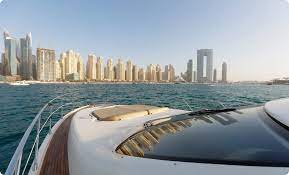Creating child-friendly marine experiences requires thoughtful preparation that addresses safety concerns, entertainment needs, and comfort requirements specific to younger passengers. Successful family yacht excursions balance adult relaxation goals with engaging activities that keep children occupied and content throughout the journey. Proper planning prevents common issues, including boredom, seasickness, and safety hazards that could compromise the entire family’s enjoyment of their marine adventure. Age-appropriate modifications to standard yacht operations ensure memorable experiences that appeal to both children and accompanying adults. Families considering options from yacht sale dubai operators often discover specialized vessels designed for multi-generational comfort.
Child safety enhancement measures
Comprehensive safety modifications create secure environments that allow children to explore vessel areas while minimizing accident risks. Additional railings, non-slip surfaces, and protective barriers prevent falls while maintaining access to age-appropriate deck areas. Safety equipment for children ensures proper protection during emergencies or unexpected weather changes. Designated supervision zones establish clear boundaries where children can play safely while remaining visible to parents and crew members. These areas include soft surfaces, rounded corners, and child-height furniture that reduce injury potential during vessel movement or rough water conditions.
Entertainment activity planning
Structured activity schedules prevent boredom while accommodating short attention spans typical of younger passengers. Age-appropriate games, craft projects, and educational activities related to marine environments create engaging experiences that complement the yacht excursion rather than competing with it. Interactive learning opportunities, including marine life identification, basic navigation concepts, and water safety lessons, transform travel time into educational experiences. These activities maintain engagement while building knowledge that enhances children’s appreciation for marine environments and boating activities.
Comfort accommodation strategies
Climate-controlled indoor spaces provide refuge from sun exposure, wind, and temperature fluctuations that might overwhelm young passengers during extended outdoor periods.
- Quiet rest areas equipped with comfortable seating allow nap opportunities during longer excursions
- Snack preparation facilities ensure constant access to familiar foods that prevent hunger-related behavioural issues
- Entertainment systems, including age-appropriate movies and music, provide backup engagement during weather delays
- Bathroom facilities designed for small children, including step stools and child-sized fixtures, improve accessibility
- Temperature regulation options, including fans, heating, and shade structures, maintain comfortable conditions throughout the trip
- Personal space allocation gives each child designated areas for belongings and quiet time when needed
These comfort provisions recognize that children require different environmental conditions than adults, ensuring their needs don’t compromise other passengers’ experiences.
Meal planning considerations
Child-friendly meal preparation accommodates dietary restrictions, preferences, and eating schedules that differ from adult passengers. Simple, familiar foods reduce the likelihood of meal-related conflicts while ensuring proper nutrition during extended marine excursions. Snack availability throughout the journey prevents hunger-induced behavioural problems while providing positive reinforcement for good behaviour. Easy-to-eat finger foods work better than complex meals that might be difficult to manage during vessel movement or outdoor dining conditions.
Emergency preparedness protocols
Child-specific emergency procedures include evacuation plans, medical response protocols, and communication systems designed for young passengers. These preparations ensure rapid response capabilities while accounting for children’s needs during crises. Emergency equipment sized appropriately for children ensures proper protection during unexpected situations. This specialized gear includes life jackets, safety harnesses, and communication devices that function effectively for smaller passengers during emergency evacuations or rescue operations. These modifications create family-friendly marine experiences that satisfy children’s developmental needs and parents’ relaxation goals while maintaining safety standards appropriate for marine environments.





